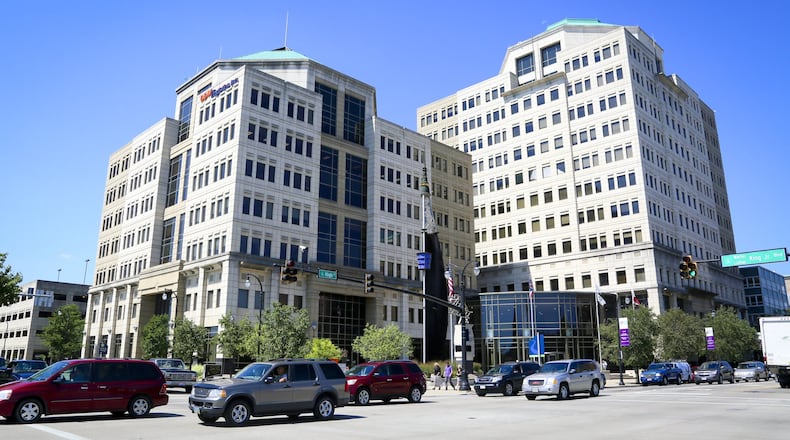“As we head into 2021 the revenues that were used to pay $10 million of debt will be at zero and give the commissioners and the administrator the opportunity to focus on infrastructure, economic development,” Finance Director Tawana Keels told the Journal-News. “(The year) 2020 is an important year to pay off the debt, so I think it’s really a year of celebration versus a crisis.”
The county commissioners approved their debt-erasing plan back in 2015. The debt stood at $91.3 million in 2009.
RELATED: Some Butler County offices step outside budget guidelines for hiring, raises
In recent years the county has been hit with the loss of $3.2 million Medicaid managed care sales tax, a $19.2 million emergency communication system replacement, double-digit health insurance hikes and a number of unfunded state and federal mandates.
Commissioner Don Dixon said the financial plan for 2020 and beyond, when the county plans to use the $10 million that used to go to general fund debt on long overdue capital improvements and to help other jurisdictions with economic development endeavors, is sound.
“It’s really helped us in getting the county squared around,” he said. “It’s a lot of money, millions of dollars. It’s a life saver for the county. Without that we couldn’t have done it. The real reason we’ve been able to do what we’ve done is that and our employees working with us.”
The 2020 general fund tax budget was set at $106.5 million but Keels said a number of actual 2019 revenue figures have come in, leading her to “comfortably” increase some income and spending projections. Sales tax is the county general fund’s largest revenue source, and she budgeted $43.9 million in the tax budget but upped the amount to just more than $44 million in the final proposed spending plan.
“At the close of November we’ve collected $40.8 million in sales tax so I feel pretty confident we will reach this new target, based on how we’re trending this year,” Keels said, adding based on the economy and the way sales tax revenues are trending for December “we will clearly exceed $44 million for 2019.”
What is not in the 2020 budget is a potential leap in sales tax now that the state has made adjustments in the tax laws to allow collection of nearly all internet sales tax dollars. A U.S. Supreme Court decision opened the broader collection last summer. Previously people had to self-report taxes they owed on online purchases.
Because there is no way to predict collections the county left the possible windfall off the budget.
“It’s really difficult to identify now,” County Administrator Judy Boyko said. “It could be nominal or it could be something that’s quite substantial.”
In addition to healthier-than-expected sales tax revenues, the county is looking at increases for property taxes; property transfer taxes; public defender reimbursements; sheriff’s dispatch and boarding of prisoners revenues; and Clerk of Courts Mary Swain turned back an additional $225,000 in title fees to the general fund totaling $1.5 million, to name a few.
Commissioner T.C. Rogers said he would have liked to have seen expenses a bit lower than projected revenues but he understands why the spending is necessary.
“I’m encouraged by the increased revenue but I thought we could hold expenses down a couple of percent,” Rogers said. “We just weren’t able to do that with the employment pressures which are put upon us by a robust economy.”
Boyko has proposed an answer to that issue for the commissioners’ consideration, with a 1 percent increase for part of the pay for performance plan. For years the commissioners have encouraged all office holders, department heads and independent boards to give raises based on merit. Nearly all of the offices and most of the unions have adopted the plan.
The commissioners devised a two-part plan several years ago so a pot of money equal to 2 percent of a department’s total wages is available for raises that are added to an employee’s base wage, based on performance. Another 2 percent is available for lump sum merit bonuses. About five years ago officials estimated the county can save about $18.5 million over 10 years by cutting the compounded raises in half.
MORE: Next year’s budget means one big thing: No more debt for Butler County
Boyko is recommending the lump sum pool of money be increased to 3 percent. She said next year will be a “bridge year” where the county can boost employee pay a bit, while the county does another salary survey to see how county wages stack up in the marketplace.
“The employees have contributed to the success and solvency of the county’s financial position,” Boyko said. “The county has a unique opportunity in this, what I’m considering a bridge year, to invest in that workforce that has contributed to the financial solvency of the county.”
Boyko is recommending the unions that have adopted the two-and-two pay for performance plan also be eligible for the 1 percent bump on the lump sum side of the equations. The total possible impact of the proposed increase is $540,925.
The general fund makes up only a quarter of the county’s annual budget. There are individual departments that operate on their own levies and or state and federal funding or are revenue generators like water and sewer. Keels is expecting to collect $394 million in all funds next year against $416 million for expenditures. She said ending fund balances are still fluid but departments that depend on levies and grants routinely rely on cash reserves to balance their budgets.
The commissioners are expected to vote on the 2020 budget on Dec. 30.
About the Author
